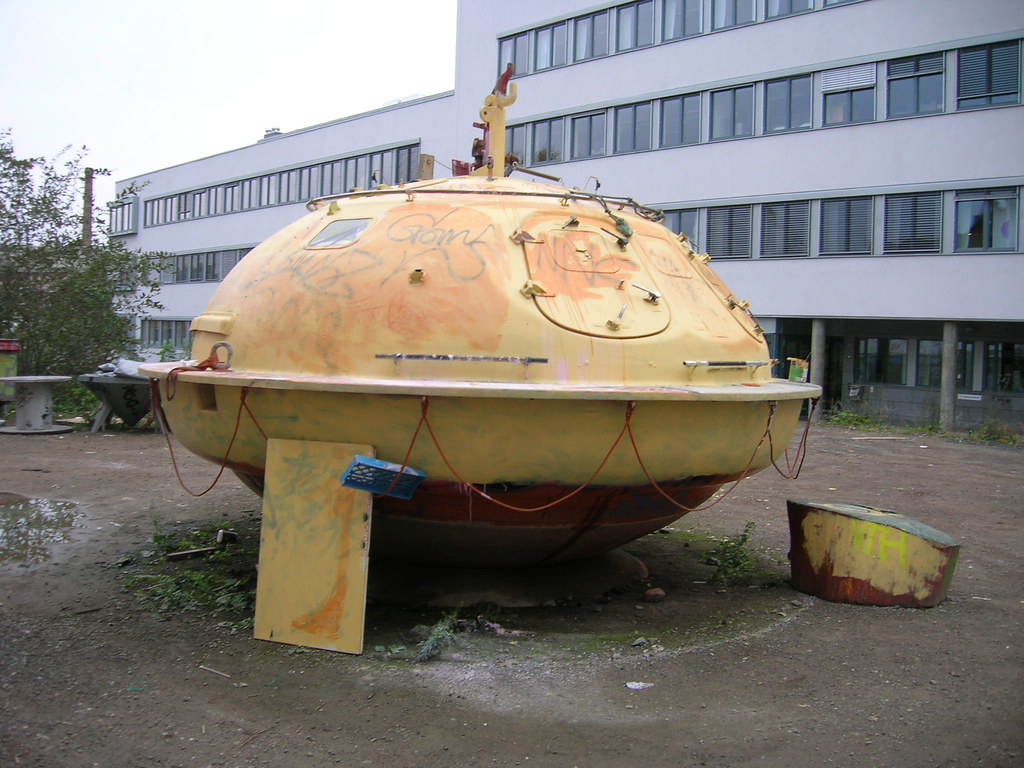There is a very interesting piece by Marc Tuters in the Glowlab zine about inflatable art. It's actually a critical summary of the"Movable Feast/ Fête Mobile" project at ZeroOne San Jose/ISEA2006.
At its most conceptual level, the Movable Feast/ Fête Mobile project extrapolated current techno-political issues into a possible future scenario in which communities are locally connected through peering protocols while disconnected from Internet as a whole. The project was thus presented as a prototype for an arts satellite for a world in which the digital public realm is increasingly corporate and surveillance is ubiquitous, in which participants would remotely view their surroundings via an onboard camera, as well as exchange media files through a wireless local file server.

What is interesting IMO is also the description of the future iteration of the project as described by the authors:
...as a gravitational node for a reality-based video game. The rules of the game itself will be simple. Teams, situated on playing field, vie for control of the intelligent blimp, much as they would a ball in the sport of rugby. Participants thus attempt to control the blimp’s navigation on the field by organizing themselves, on the fly, into shapes and patters of movement recognizable to the blimp’s onboard vision system. While the latter may seems a departure form the more high-concept approach we developed for ISEA, at its core it remains theoretically informed by our interest in exploring new forms of collectivity in urban space. The phenomena of emergent self-organization is as central to terrorist networks as it is to popular democratic uprisings. As artists, we have thus settled on "play" as our chosen approach to explore facets of our individual and collective relations within the space of networked art.
Why do I blog this? first because I liked the project and second because of this game concept that seems pretty curious and relevant to explore ideas related to people's relation with space and networks.
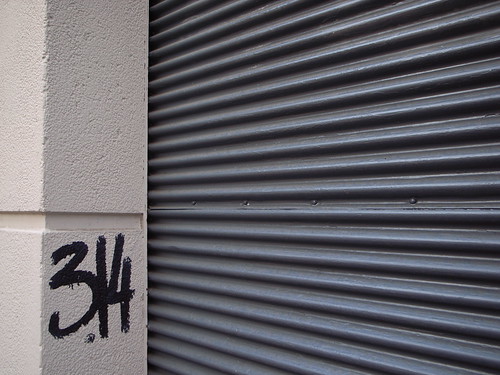 A very unprecise Pi annotation (it does not give more than 2 digits) found on the streets of Lyon. Very concise anyway. The presence of a mathematical constant.
A very unprecise Pi annotation (it does not give more than 2 digits) found on the streets of Lyon. Very concise anyway. The presence of a mathematical constant. 
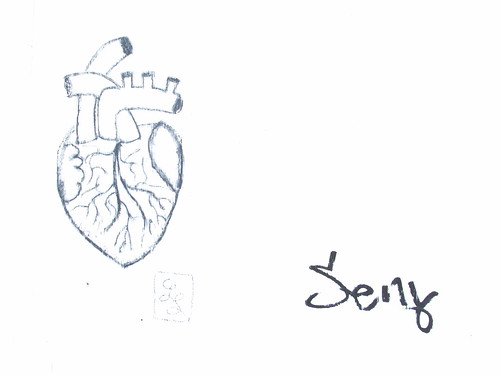
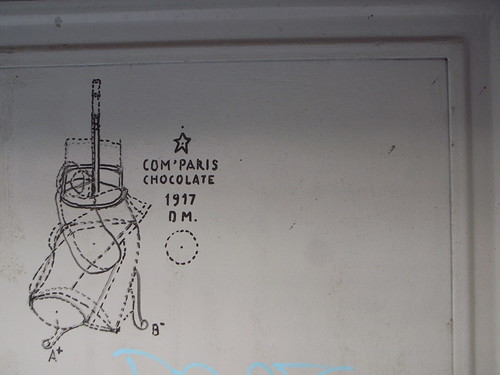





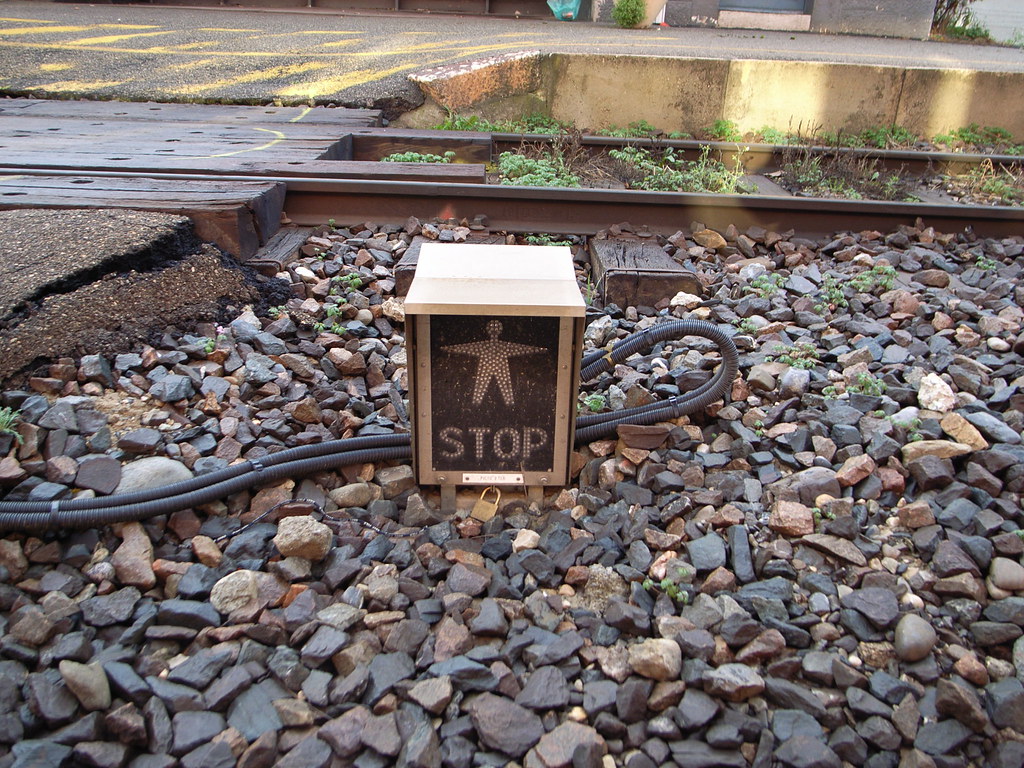
 See the weblog of the project
See the weblog of the project 
 Why do I blog this? I actually like the metaphor of the stone for an external hard drive; the shape is also convenient.
Why do I blog this? I actually like the metaphor of the stone for an external hard drive; the shape is also convenient.




